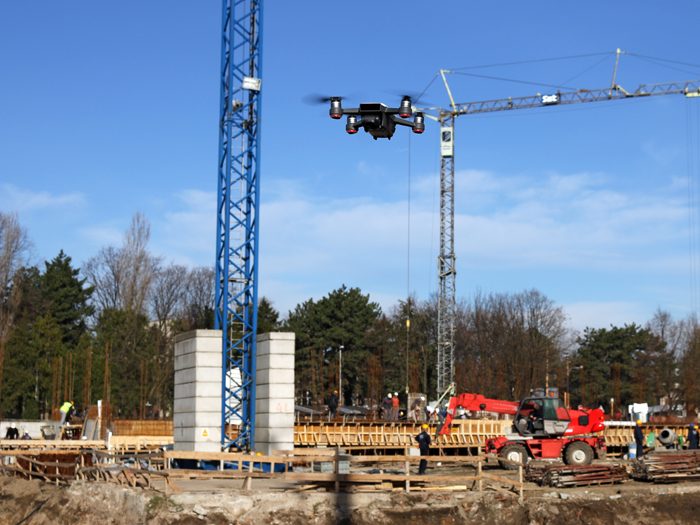The Exciting, New Ways Technology Is Streamlining the Claims Management Process

Technology is a tool, like fire or gin. It can be used for good or for ill. Most workers on a construction site or in a warehouse are willing to wear a sensor if it will keep them from getting run over by a forklift or knocked off a ledge by a crane.
They do not want the same sensor to report them two minutes late from lunch.
For every advocate extolling the efficiency and economy of artificial intelligence in claims processing and fraud detection, there is a skeptic quoting from The Terminator: “Human decisions are removed from strategic defense. Skynet begins to learn at a geometric rate. It becomes self-aware at 2:14 a.m. Eastern time, August 29th.”
There are a myriad of companies doing similar things, said James DiVirgilio, chief regional claims officer for the Americas and head of U.S. claims at AXA XL.
“That kind of complexity lends itself to third parties: better not to build and own all the technology. Still, it takes time to work through all the pilots to see what really makes a difference,” he said.
“It is a service play, that is why it is important to customers. What matters is what makes a difference for them.”
All the Ways Tech Can Help
The areas where AXA XL applies claims tech most is across P&C as well as in marine.
“We see a lot of people use it on the jobsite to keep workers safe with wearable boots, gloves and vests,” said DiVirgilio. “We also see it in driving exposure. We are seeing volatility in auto accidents, both severity and frequency. Cameras in cabs and telemetrics are useful to help us know the liability picture.”
Back-office applications include predictive modeling and fraud detection.
“We are testing that in one area to detect claims that may be larger or more severe than they appear to be at first,” said DiVirgilio.

Paul Schrembeck, SVP of innovation and product development, Sedgwick
“Then we can get more senior people involved as necessary. At the other end we can also identify simple, legitimate claims. There certainly are a lot of those that can go straight through. We want to get those paid.”
All in all, DiVirgilio stated that the cyber or robotic process tends to simplify and accelerate the claims intake process.
“We are just starting that, it is inside a year still. We are in alignment with our insured on a lot of this. There is some resistance from employees, especially about wearing sensors. They don’t like being monitored.”
On a wider scale, DiVirgilio noted, “drones and aircraft are very useful. We use those for pipelines and big losses. We have also had good success with satellite images to look at a million square feet of roof.”
From a property perspective, aerial survey has really gained, said Paul Schrembeck, senior vice president of innovation and product development at risk and benefits management firm Sedgwick.
“That is especially true with reporting and analytics,” he said.
For example, in natural disasters, damage zones can be identified with heavy, moderate and light damage for claims triage.
“If we know the expected landfall of a hurricane,” said Schrembeck, “we can schedule an aircraft survey for the first clear day after the storm, then arrange for a network to fly drones locally over the next two days. There are a lot of tech providers that tout silver bullets, but there is not one claims-management technology that can solve all problems.”
Sophisticated and expensive tech isn’t always a necessity, either.
As an example, Schrembeck noted: “If there is a homeowner with water damage, we can send her a secure video link and she can walk around her house with her smartphone. A knowledgeable adjuster can make an initial estimate and send a check that day. That is a great use of technology.”
The Relationship Between Tech and People
Despite such great potential, “connectivity for cell phones remains a challenge.”
Even as Schrembeck stressed the largest strides in claims-management technology have been in reporting and analytics, he added that “tech enables choices by customers in terms of how to manage claims. It used to be that the claims process was just decided by the insurer.”
Schrembeck also noted how technology should be a tool to support human-designed business processes and not a way of replacing personal experience in claims management.
“We are seeing that today with roofs, for example. We can run a drone image through artificial intelligence to verify hail damage. Humans still get in on the back end to judge exceptions. We never want to remove human judgment.”
Beverley Adams, head of visual intelligence and catastrophe planning at Marsh and Guy Carpenter, explained that visual intelligence is the combined resource of drone, aircraft and satellite images, as well as ground-level surveys.
“We are definitely using all of those operationally for claims management,” she said.
On a consulting basis, Adams said her team helps clients determine how to work technology into their claims management systems.
“Imagery can inform advanced payments for things like proof of structural loss. There is always the need for expertise for things like contents or in complex cases. Tech does not replace people. It adds efficiency and helps expedite. We are stepping through areas we have never been before.”
Visual Intelligence
One important consideration for visual intelligence is who owns the data.
“If I commission an aerial survey, then I own it, along with the company that captured the images. For individual properties surveyed by drone, that ownership rests with the client. It is not shared. For satellites there is no ability to own the data. All we own is the algorithm to interpret the image for damage.”
Adams stressed that visual intelligence is not expensive.

Beverley Adams, head of visual intelligence and catastrophe planning, Marsh and Guy Carpenter
“People have an idea that these images cost tens of thousands of dollars. That is not so. It is very affordable, we’ve got it built in and it needs to become a part of business as usual for companies large and small.”
Claims managers are being asked to do more and more manual tasks that take time away from their true value, which is adjudicating claims, said Stephen Thomas, vice president of product management at Ventiv Technology.
That firm provides robotic process automation software (RPS). “In property and casualty, as well as workers’ compensation, RPS handles many repetitive manual tasks and allows adjusters to get back to adjudicating claims,” Thomas said.
That depends on machine learning, the computer acting like a user. The software has been in commercial use for about two years with a mixed customer base of insureds, including a significant number of self-insureds as well as municipalities and third-party adjusters.
As might be imagined, there are regular updates to the core RPS tool, as well as modifications to accommodate changes to the outside systems with which it interacts.
“We are constantly monitoring,” said Thomas.
“There is a happy path, or the operational path, where the RPS and the other systems are exchanging information. There can also be the sad path or the error path, where the exchange is not returning data. At that point the bot notifies people, typically by email. That includes a log file of information for troubleshooting.”
Looking Into the Future
“Clients are excited that they can take people off some tasks and [put them] onto more important things,” said Thomas. “One of the exciting new areas is access to data lakes or farms for decision support and benchmarking claims performance.”
Ross M. Goren, an attorney with Weber Gallagher, concurs that “technology is at the forefront, but relationships are still most important. Tech takes some of the time and expense out of claims management, and that creates an environment in which to match things that require higher-level judgment.”
He sees a matrix of technology from the granular (like wearable sensors) to tactical (such as drones and aerial survey), to strategic (artificial intelligence and processing algorithms).
“There is also overlap,” Goren explained. “Workflow technology and claims-management systems overlay the sensors and surveys. You could even throw blockchain in there.”
Goren is most excited about the interpretive and meta-assessment capabilities of claims tech.
“If you have 20 workers’ comp claims, then AI can help assess fraud or expedite the simple ones.
“Pre-filled forms are helpful. But it can also x-ray them and see that two are freak accidents, five are slip and fall, and thirteen are repetitive injury.
“Now you know that is a major source of exposure and can examine behavior. Do employees need better training? Better equipment? Or would it be better to reconfigure the workplace?” he said. &










